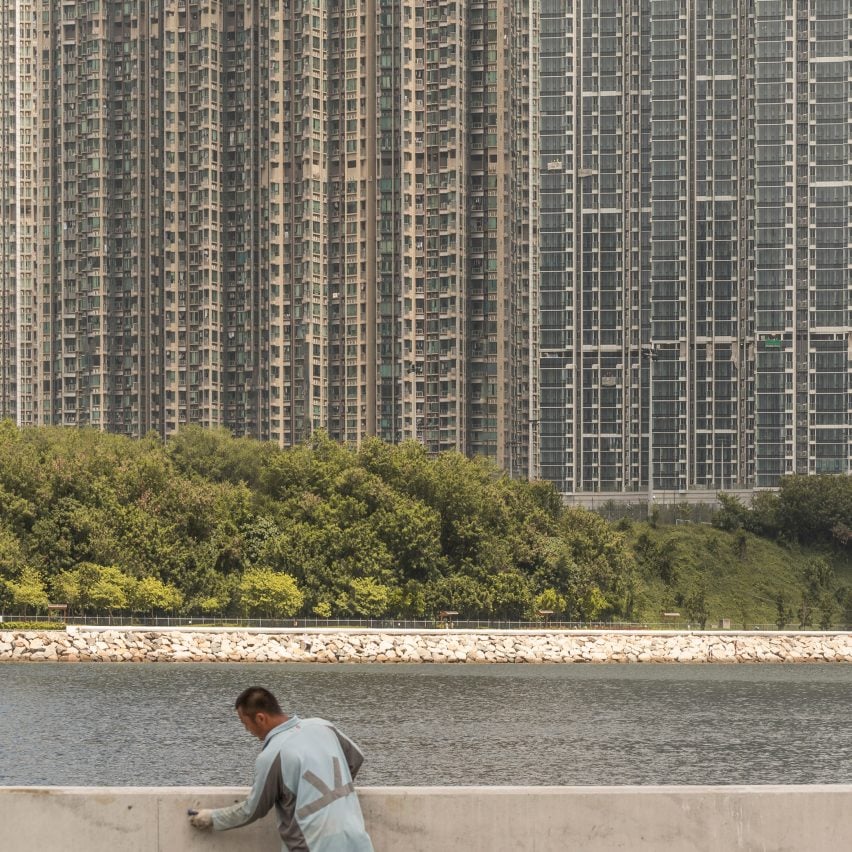
Belgian photographer Kris Provoost explores the striking juxtaposition of Hong Kong's "hyper-dense" housing and natural landscapes in his latest photography series, Eden of the Orient.
Eden of the Orient gives an insight into Hong Kong's unique built environment, which is enveloped by greenery but recognised as one of the densest places to live on Earth.
"Hong Kong is extreme in its immense density, nowhere else do you have to deal with this level of density. Wherever you look, there are high-rise residential towers," Provoost, who lives in Hong Kong, told Dezeen.
"It is quite common to have a family of four living in a tiny apartment of 40 square metres."
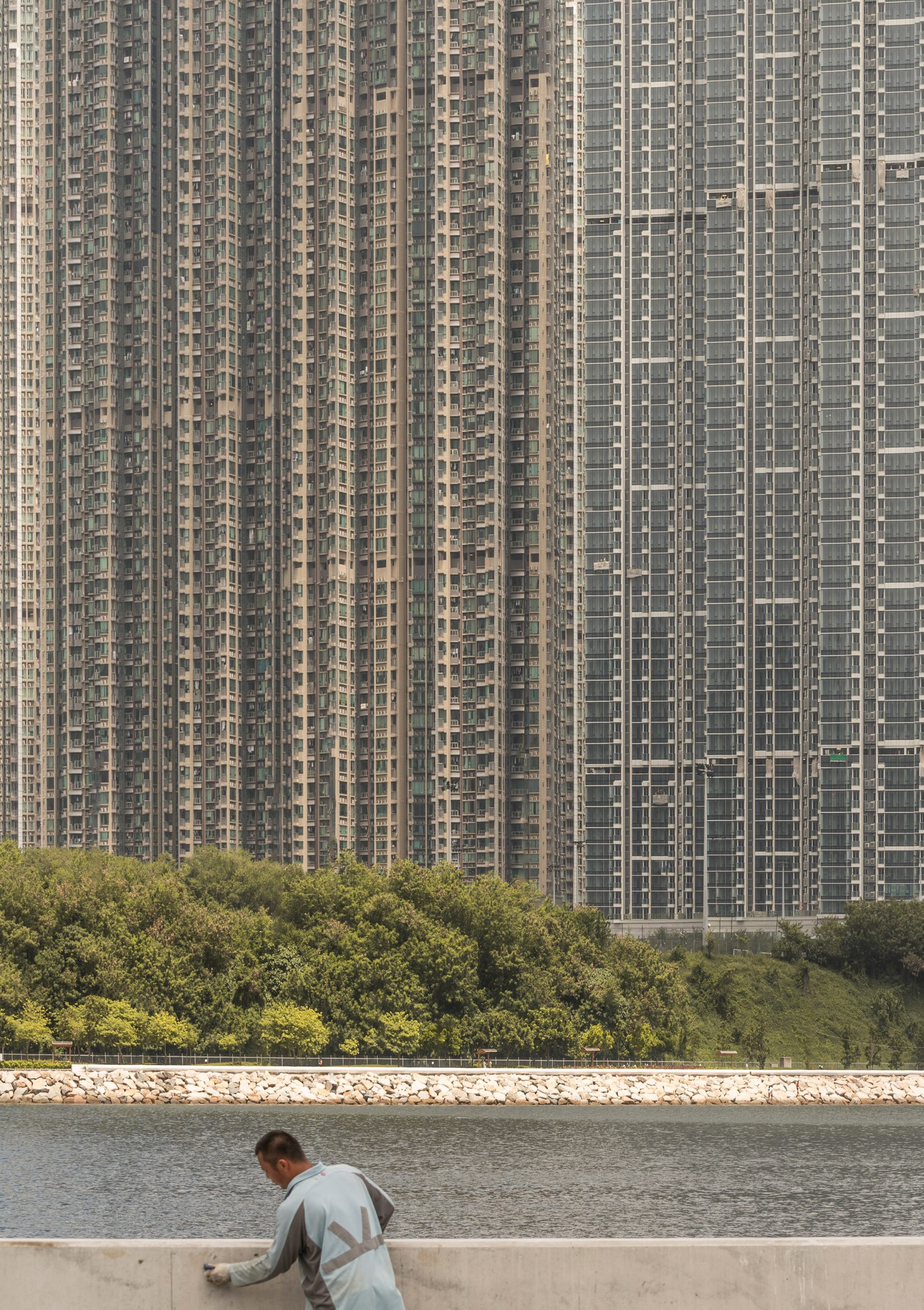
Hong Kong's giant apartment blocks, many of which are known as "new towns", are the result of the region's booming population over the last century and a lack of flat land on which to build. Only seven per cent of the total landmass is zoned for housing.
As a result, small pockets of space between mountains are saturated with high-rise housing, and 25 per cent of the total population are housed in towers on reclaimed land.
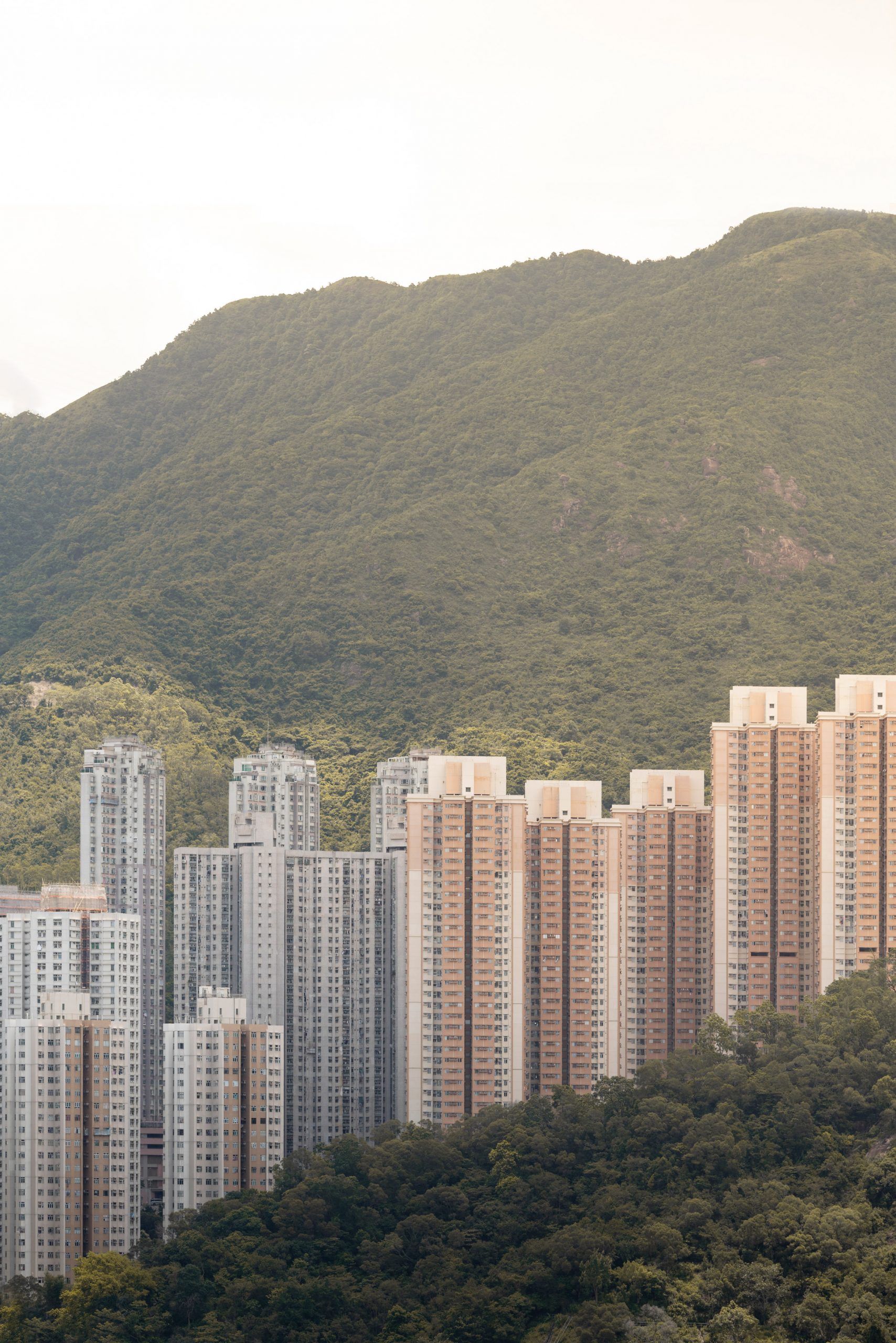
According to Provoost, the lack of space in Hong Kong is resulting in the government constructing more residential towers at greater heights. These have smaller apartments that are only available at high prices.
As such, he says there is an overwhelming "claustrophobic feeling" and that the region is "slowly becoming unlivable" for many citizens.
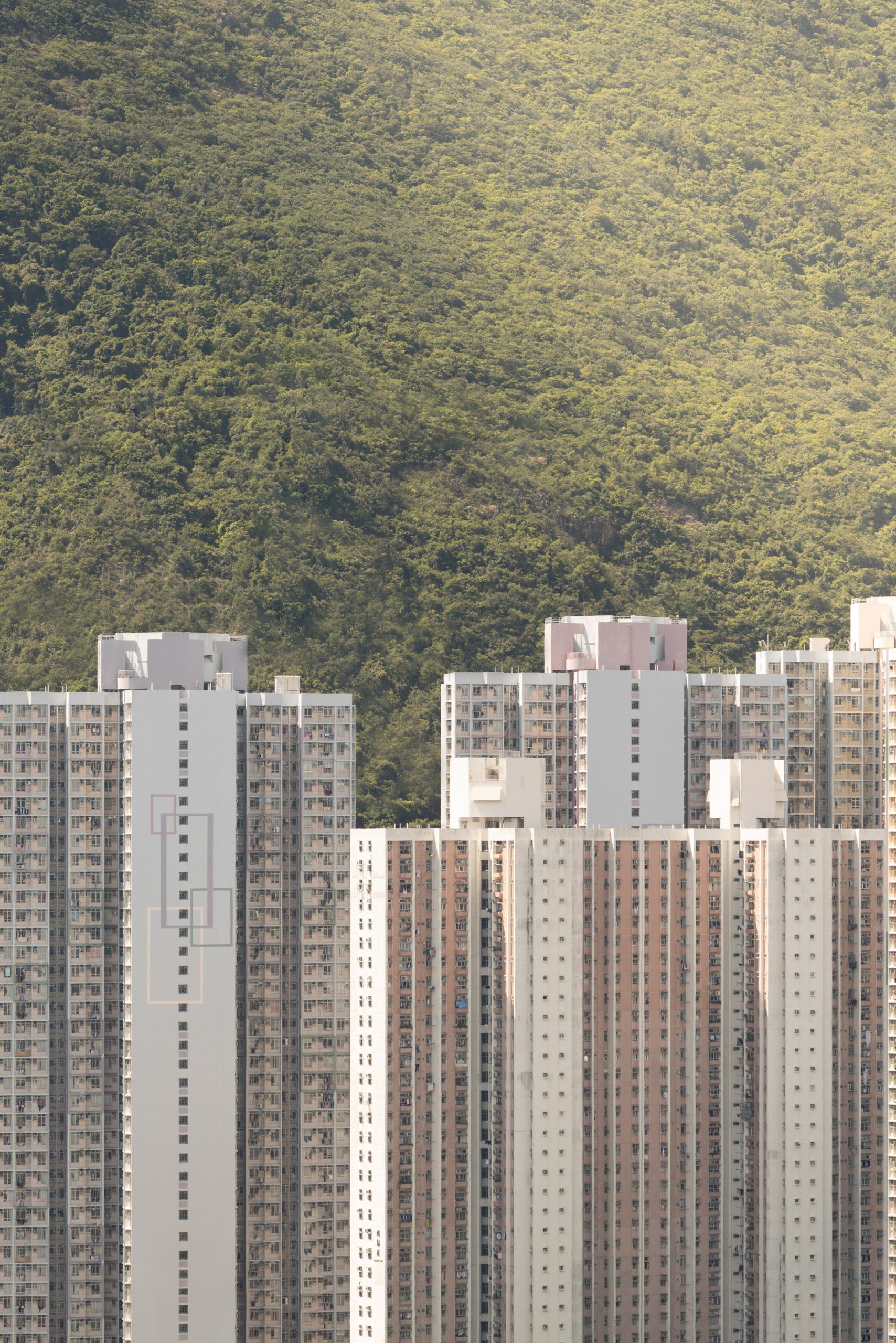
Provoost's idea for Eden of the Orient was sparked by the coronavirus pandemic, which saw many countries and cities around the world go into lockdown to stunt the spread of the virus.
He believes that if a lockdown was introduced in Hong Kong, there would have been a devastating effect on many local people's mental health, as a direct result of the housing.
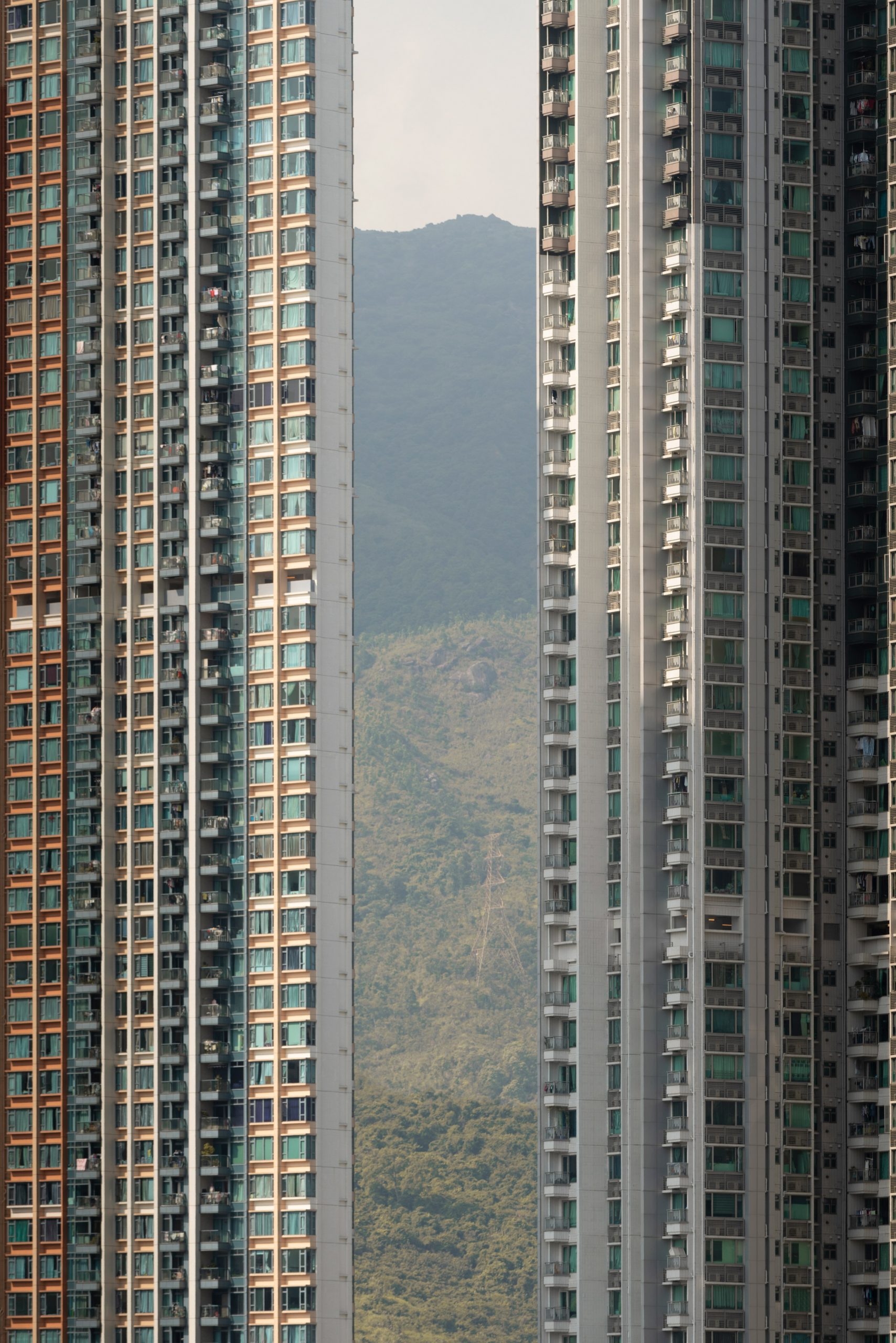
"While the majority of the world was forced into lockdown to contain the spread of the coronavirus, Hong Kong, my home, has been spared," he said.
"This gave me the opportunity to have a look at how we live. I wanted to observe and photograph how Hong Kong always has been an extreme place to live and where if ever a lockdown would be enforced, it would lead to massive mental issues due to its characteristics."
"[Lockdown] would have been a mental battlefield. The average living space per person in Hong Kong is about 15 square metres – that isn't much," Provoost continued.
"Locking up millions of Hong Kong people in their tiny 'shoeboxes' would be a disaster that would take years to mentally heal from."
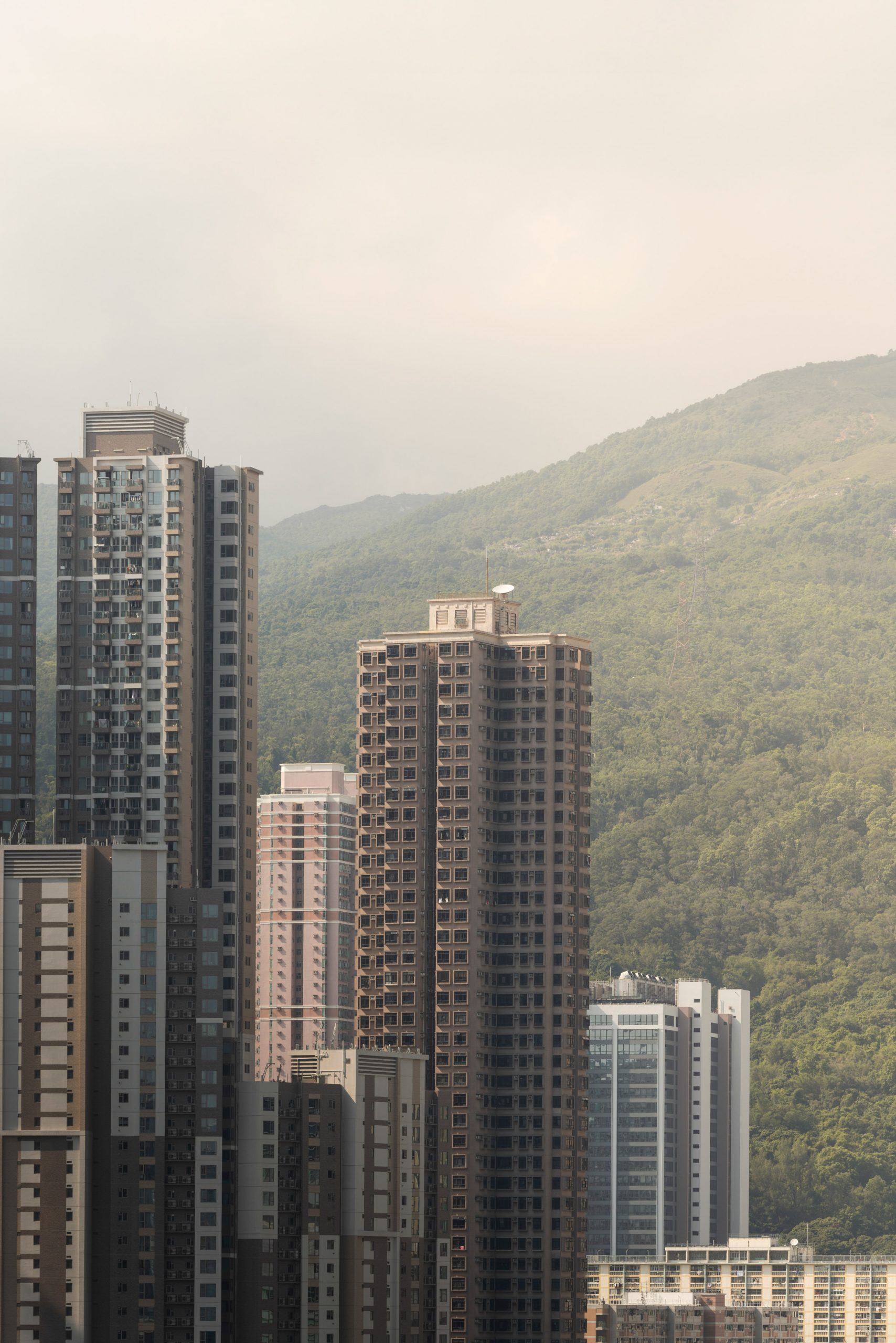
Alongside the high rise towers, a notable element of each photo in Eden of the Orient series is the surrounding mountainous landscape.
Provoost cites these natural surroundings as a lifeline for many people in Hong Kong, and says that if a lockdown had been introduced, these open spaces would "be overrun by people escaping the city and their tiny flats".
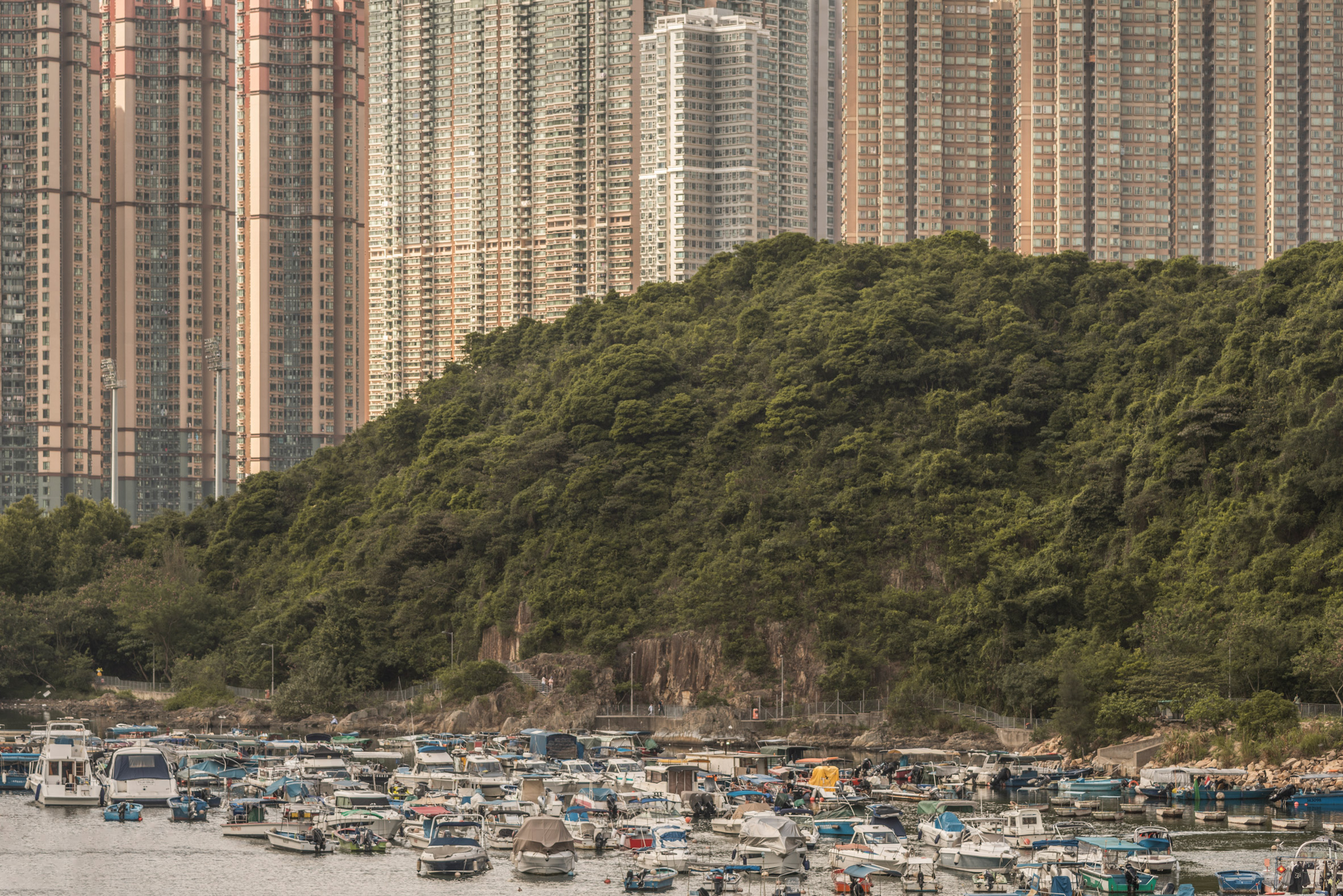
"Across the images, you can see nature creeping up to the housing blocks, or is it rather housing blocks encroaching on nature," said Provoost. "This is what makes Hong Kong so unique."
"No other place in the world has this often dividing line between city and nature so visible," he continued. "One can live in a jam-packed housing estate rising up 70 floors, yet there is a mountain looming over you."
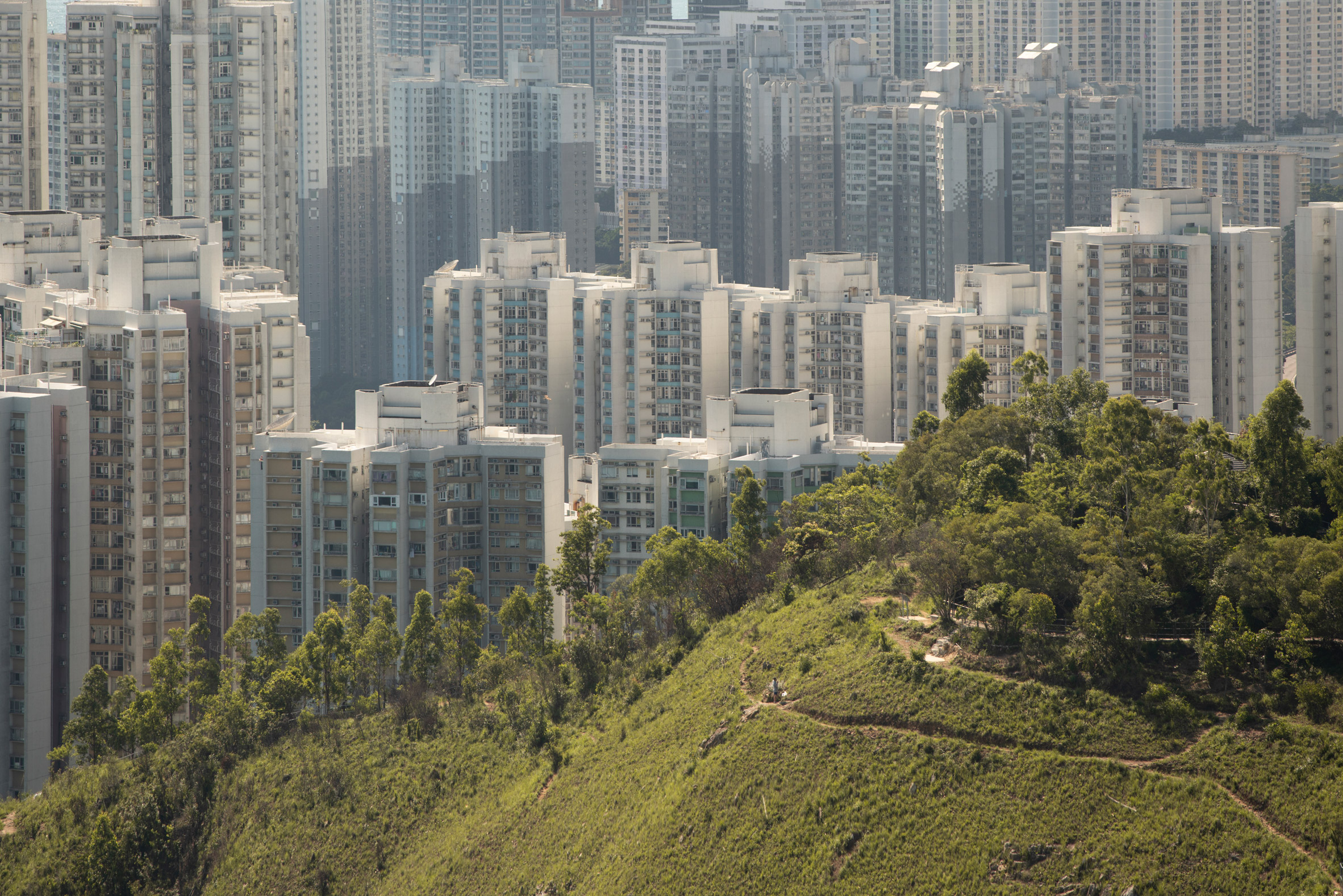
"Hong Kong is a wonderful city to live, with an abundance of nature, sea and islands, yet the Covid-19 crisis has evoked questions on how we live," Provoost concluded.
"These country parks have been the saving grace for many Hong Kong people, that I am sure of."
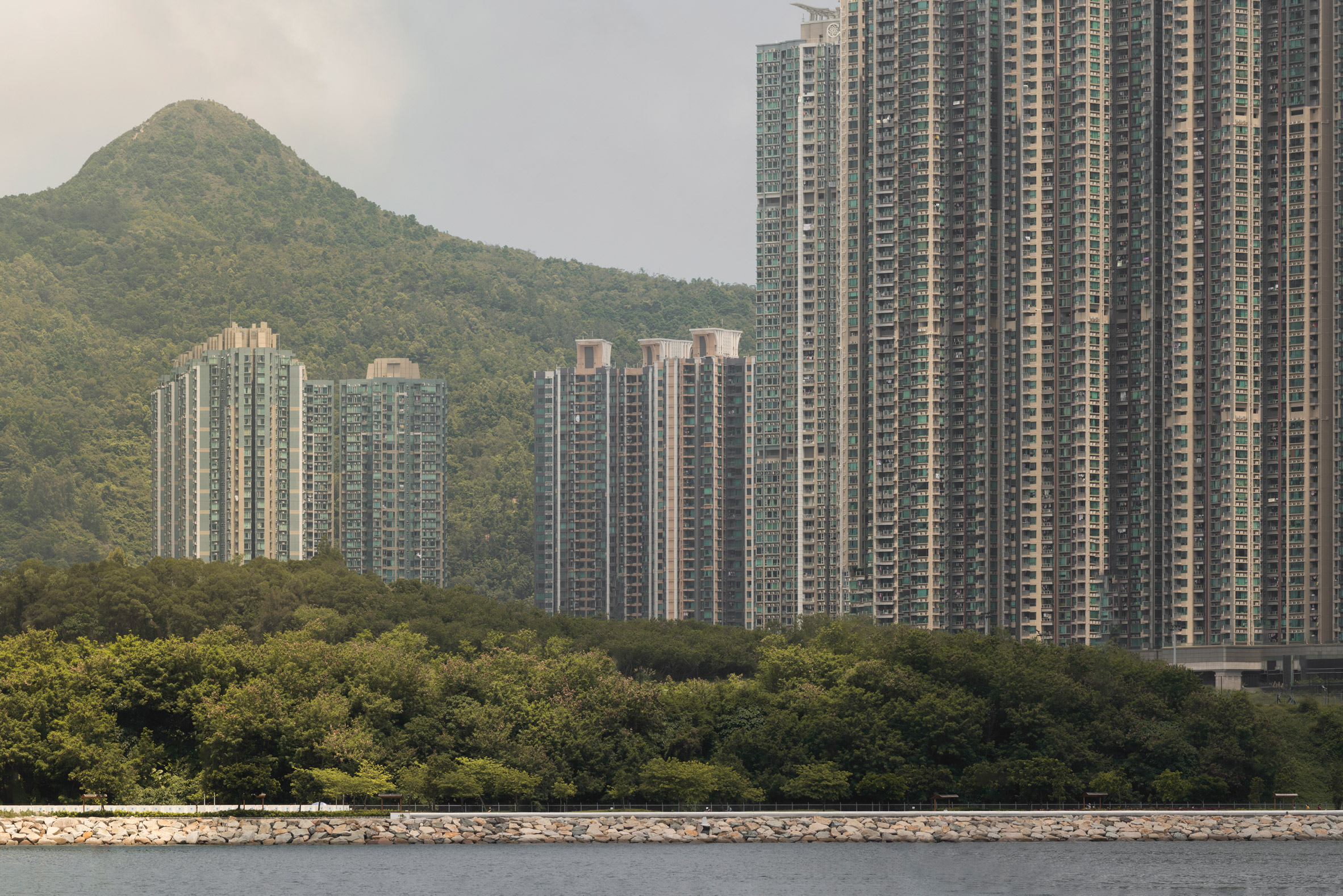
Eden of the Orient sees Provoost break away from his usual style of photography, which depicts buildings as abstract forms against bright blue skies as part of the Beautified China series.
He recently published this Beautified China collection in a book to illuminate the country's emergence as a hotspot for contemporary architecture.
Other projects on Dezeen that explore the high-density housing in Hong Kong include Max Hattler's repetitive animations for his film Serial Parallels and a proposal by IAAC graduates that imagines an apartment blocks with parasitic pods.
The post Kris Provoost captures "immense density" of Hong Kong's housing appeared first on Dezeen.
from Dezeen https://ift.tt/3jt0uLQ
No comments:
Post a Comment